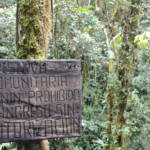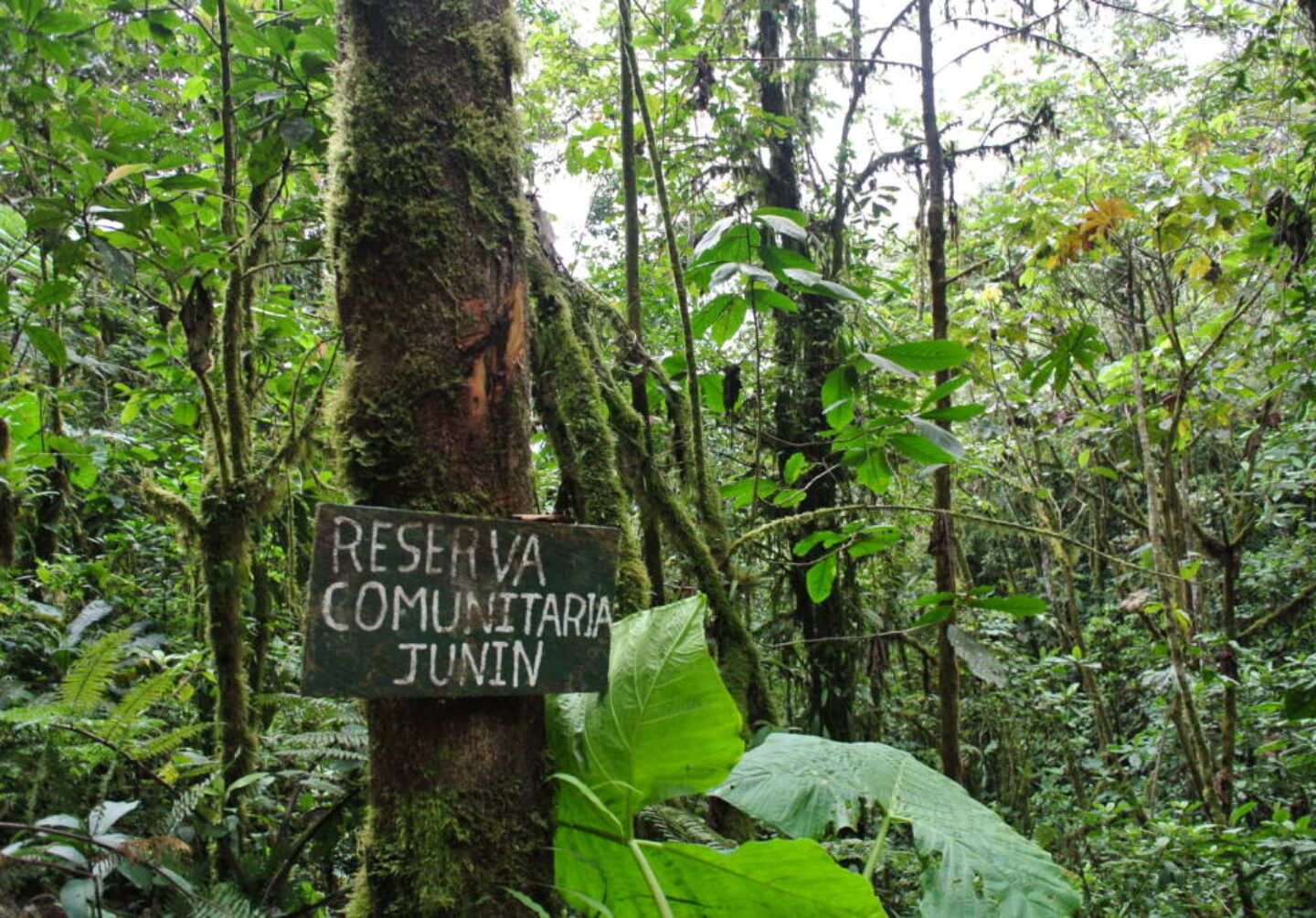Many of the most bio-diverse places on Earth are being opened up to resource extraction, and that will have consequences for the future of life on this planet. Whether it is for oil and gas or for minerals, the thirst for the raw materials that fuel the global economy is having devastating effects on the environment. What got me thinking about this problem was years of interaction with a rural community in the Intag region of Ecuador. The name Intag refers to an interconnected series of mountain valleys in the province of Imbabura in northern Ecuador. The Intag region is on the western slopes of the Andes, and makes up a watershed. The rivers there all ultimately drain into the dense rainforest and then the Pacific Ocean. All throughout this valley, the water comes down from the mountains in crystal clear cascading streams and rivers. At the right elevation you can drink the crisp water right from the streams, before it has been touched by any human activity. The elevation is perfect for a type of tropical forest called a cloud forest, an eco-system that draws moisture from the clouds, and is perpetually lush and green. It is the last remaining coastal rainforest in Ecuador. The region straddles two of the worlds most important biological hotspots: the Tropical Andes and the Tumbes Choco-Magdalena hotspot. This extremely beautiful was where I lived for a few months in 2011 as part of a year abroad with my university. This cloud forest paradise was where I found myself on a sunny day back in February of this year, when I was visiting to meet with the farmers that supply my coffee business.
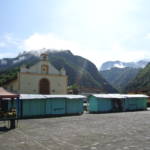
It is Sunday afternoon and I am in the town of Apuela, Intag. Two old men play guitar on a stage, singing songs about drinking moonshine and about their love for their hometown. They are singing about Intag, about what a pleasure it is to visit. People are dancing and sharing bottles of beer. Vendors on the street are selling everything from ice cream and fresh fruit to chicken and fried plantain. This was a party in the main square of the town, where people congregate every Sunday to socialize and make their purchases for the week. The town of Apuela is nestled between steep, lush green mountains. This was our last day in Intag, after visiting with coffee farmers and hiking in the cloud forest for a couple weeks. I have been importing coffee from a farmer owned cooperative here since 2014. It all started after visiting the community in 2011 as part of a year abroad with Trent University, studying international development. I wanted to help support the farmer led resistance against mining companies, through purchasing their coffee. The community has spent more than 20 years resisting mining companies that seek to create large open-pit copper and gold mines. The struggle continues: a Chilean corporation is the current mining company looking to access the mineral wealth. There are still people living around the proposed mining site who vow to struggle against this project until the end. At this point is necessary to give a brief summary of the history of mining resistance in the Intag.
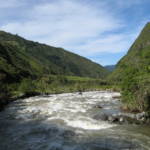 It all began in the 1990’s when a Japanese mining company discovered large copper and gold deposits beneath the pristine cloud forest by the town of Junin in the Intag valley. Since then, there has been a struggle between mining companies and their supporters, and the people who are opposed to the mine. Anyone in the area will tell you the worst impact of the arrival of mining companies in the area has been the social division of those who either support or oppose the mine. There used to be harmony, with neighbours working collectively to get things done. There was a culture of getting the community together to maintain paths and build new bridges. These shared work projects are called mingas. There was very little crime, and therefore little police presence. Everything changed with the arrival of Bishi Metals, a Japanese mining company. The Japanese began exploration but quickly contaminated the river that the village of Junin uses for all their water needs. Cattle drinking the water got sick, and children bathing in the river got rashes. The local population reacted furiously when they realized the mining company had contaminated their water source. The community did two things in reaction: they burnt down the mining camp and they started several organizations aimed to provide alternatives to mining. They needed to combat the idea that mining was the only way to create jobs and prosperity. They formed DECOIN, an environmental group that educates people on the risks associated to mining, plants trees and shares organic seeds with the community. They also started an organic coffee co-operative called AACRI. The coffee co-op supports farmers by providing seedlings, fertilizer and advice about coffee cultivation. It also allows the farmers to pool resources and market their coffee to far away places like Japan, Germany and Canada. Organic coffee is only one of the many products that are created locally by the community.
It all began in the 1990’s when a Japanese mining company discovered large copper and gold deposits beneath the pristine cloud forest by the town of Junin in the Intag valley. Since then, there has been a struggle between mining companies and their supporters, and the people who are opposed to the mine. Anyone in the area will tell you the worst impact of the arrival of mining companies in the area has been the social division of those who either support or oppose the mine. There used to be harmony, with neighbours working collectively to get things done. There was a culture of getting the community together to maintain paths and build new bridges. These shared work projects are called mingas. There was very little crime, and therefore little police presence. Everything changed with the arrival of Bishi Metals, a Japanese mining company. The Japanese began exploration but quickly contaminated the river that the village of Junin uses for all their water needs. Cattle drinking the water got sick, and children bathing in the river got rashes. The local population reacted furiously when they realized the mining company had contaminated their water source. The community did two things in reaction: they burnt down the mining camp and they started several organizations aimed to provide alternatives to mining. They needed to combat the idea that mining was the only way to create jobs and prosperity. They formed DECOIN, an environmental group that educates people on the risks associated to mining, plants trees and shares organic seeds with the community. They also started an organic coffee co-operative called AACRI. The coffee co-op supports farmers by providing seedlings, fertilizer and advice about coffee cultivation. It also allows the farmers to pool resources and market their coffee to far away places like Japan, Germany and Canada. Organic coffee is only one of the many products that are created locally by the community.
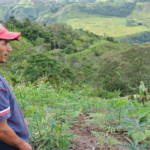 A womens cooperative from the town of El Rosal started making organic soap and body products. The cooperative, called Naturaloe, make soap using organic aloe and papaya that are grown in their gardens. Their soap is sold in stores across the country and internationally. My friend and I visited El Rosal this past year, and were welcomed by Jermania who is one of the core three women who run Naturaloe. She showed us how to make soap, using machetes to harvest the huge aloe plants in her yard and then boiling down a mixture on the stove. She talked about the ups and downs of running a business as a woman in rural Ecuador. Jermania and her husband Ramiro have an organic farm where they grow coffee and vegetables, and they harvest honey as well. They have a large pond where they keep fish to be harvested and eaten throughout the year. They tell me that they are far away enough from the mine that they won’t be immediately impacted by the activity. However, Ramiro says that eventually the contamination will spread everywhere if they develop all the mine sites that are proposed. The womens cooperative wanted to prove they could run a business selling the products they made with the products from their farms. They got a loan and built a production facility next to their homes. The community feels like a happy one. They grow most of the food that they need, through their own hard work they live well. All these groups reflected the belief that mining would not be a wise choice for the future development of the area. They offered real alternatives. The Japanese mining company was kicked out, but a few years later a Canadian mining company called Ascendant Copper arrived on the scene.
A womens cooperative from the town of El Rosal started making organic soap and body products. The cooperative, called Naturaloe, make soap using organic aloe and papaya that are grown in their gardens. Their soap is sold in stores across the country and internationally. My friend and I visited El Rosal this past year, and were welcomed by Jermania who is one of the core three women who run Naturaloe. She showed us how to make soap, using machetes to harvest the huge aloe plants in her yard and then boiling down a mixture on the stove. She talked about the ups and downs of running a business as a woman in rural Ecuador. Jermania and her husband Ramiro have an organic farm where they grow coffee and vegetables, and they harvest honey as well. They have a large pond where they keep fish to be harvested and eaten throughout the year. They tell me that they are far away enough from the mine that they won’t be immediately impacted by the activity. However, Ramiro says that eventually the contamination will spread everywhere if they develop all the mine sites that are proposed. The womens cooperative wanted to prove they could run a business selling the products they made with the products from their farms. They got a loan and built a production facility next to their homes. The community feels like a happy one. They grow most of the food that they need, through their own hard work they live well. All these groups reflected the belief that mining would not be a wise choice for the future development of the area. They offered real alternatives. The Japanese mining company was kicked out, but a few years later a Canadian mining company called Ascendant Copper arrived on the scene.
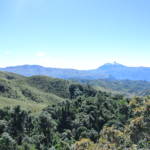
After the Japanese company left things more or less returned to the way they were. People lived as they had traditionally, peacefully cultivating a diverse array of products from the rich soil. Among the crops in cultivation are: tropical fruit, coffee, cacao, corn, beans, potatoes, tree-tomatoes, sugar cane and bananas. In 2008 the Canadian mining company, Ascendant Copper arrived in the Intag. The community blocked entrance to the mining concession, and refused to let prospectors in. They had by this point educated themselves on the risks associated with open pit industrial mining techniques. They even visited open pit mines in Peru and saw the environmental contamination first hand. They saw the examples of desertification caused by deforestation on mine sites. They did not want to see this happen to their farms. So the lines were drawn and a confrontation loomed.
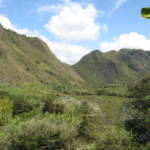
The Canadian mining company hired a paramilitary group to use force to push their way past the community barricade. Armed with pistols and pepper spray the paramilitaries attacked the barricade, spraying women in the face with pepper spray and firing shots at the crowd. The paramilitaries were ultimately unsuccessful. The community rallied and gathered in the hundreds to rid the area of the paramilitaries. The community armed themselves with machetes and rifles and hiked into the cloud forest where the paramilitaries were camped out eating breakfast. They surrounded them, forced them to hand over their weapons and then held them in a local church until the authorities arrived. The community was successful in defeating the Canadian mining company. Ascendant Copper changed their name to Copper Mesa because of the negative publicity, and they eventually went out of business. This particular stage in the struggle is well documented. Still, the struggle was not over. In 2012 it became clear that another mining company had been granted permission to mine in the area. The mining company, this time around, is a Chilean company called CODELCO.
This massive Chilean corporation partnered with the Ecuadorian government with the aim to extract the large deposits of copper and gold from the Intag. The companies experience is in mining in the Chilean desert, very different from the tropical cloud forest. In May 2014 the company entered the community with an escort of more than three hundred police officers. People from nearby communities who wanted to support the resistance were blocked access on the only road into the village. A heavy police presence was established to intimidate the locals, with dozens of officers stationed in the tiny town of Junin.
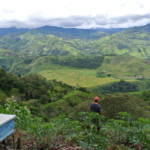
The town of Junin is tiny – there are only about fifteen houses in a circle around a communal square. There is a historic church, a volleyball court and a community house. The church was briefly used to detain the paramilitaries that the Canadian company hired. Junin is deeply divided on the issue of mining. A banner on the house of Javier Ramirez proclaims: “No a la Mineria.” Say no to mining. Javier Ramirez was the president of the town, before he was arrested and imprisoned for opposing mining. I have visited the town twice in the last few years. I stayed with a kind old couple, Don Segundo and Donna Carmelita. Last time I was there I asked them how they have been. They answer that things have not been good. They eplain, they are ecologists who are surrounded by miners. Their reality is a difficult state of elevated tension and misery. They seem hopeless and defeated. They feel constantly intimidated, knowing that mining is being forced on them. The company is doing exploratory work right now: building roads, clearing forest, drilling holes for samples and building mining camps. They have not actually started exploiting the mine yet: but it looks increasingly likely that they will. Not only that, but it now looks like an even larger section of land is in danger of being handed over to mining companies.
It’s a swelteringly hot day, and I’m sitting in the office of DECOIN in the town of Apuela. DECOIN stands for Defensa y Conservacion Ecologica de Intag. They are showing me a large map of Intag. The area that makes up Intag is around 115,000 Hectares of land, roughly equivalent of two Prince Edward Island’s. Out of that, 95,000 Hectares is in risk of being sold off to mining companies. This is not vacant land, there are approximately 17,000 people living on the land, farming to grow their own food. Family farms could be either expropriated or bought at a low price, and then the families who live there now will be evicted. Some people have title to their land, but others do not. If they do have title to their land they can try to negotiate a decent price to have their land bought off them by the company. If they do not have title, then they risk being evicted from the only home they have with no reimbursement. The government of Ecuador does not buy peoples property, so they could simply end up with nothing. That is to say: a hundred thousand Hectares of rich soil, clean water and tropical forest could be destroyed to extract gold, copper and molybdenum (which is used to make steel alloys.) If mining happens to the scale that is being proposed in the Intag, farming will be devastated and the ecological value of the region will be compromised. This would be a net loss for not just the people living there, but for the whole world. The resources would be extracted, some locals would get low paying jobs for the duration of the mines life cycle and most of the wealth would flow to elites in Chile and Quito (the capital of Ecuador.) 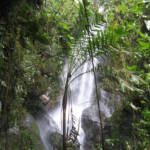
Even in the exploration stage the mining company has caused significant pollution. When we walked through the community ecological reserve on our trip there in February 2017, we saw evidence of this pollution. One waterfall had been turned to a rusty orange/brown colour due to sulfer contamination. This is because the gold and copper are not alone in the ground, there are a myriad of other minerals that get released when you extract them. Apparently a technician from the government came and said that the change of color in the water is “natural” and not related to mining. Then again, the government has a vested interest in the mine and will mostly likely not enforce the environmental regulations they themselves have put it place. The company has also violated many of the guidelines set out in its environmental impact assessment. For example the company has made roads that are way wider than that is permitted. Road construction in the tropical forest has a huge effect on the forest as a whole. They have also cut down trees that are hundreds of years old, which is against their own rules. The environmental impact assessment was done in 2015, and has already been violated on numerous fronts. They have also built entire mining camps that do not exist in their assessment. All of this has happened before they have even extracted a single ounce of copper from the land. So the question is not whether there will be substantial environmental destruction caused by mining in the region, it is a question of when.
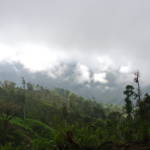
Despite all this, the people who resist the mine and call themselves the ecologistas have hope still. They believe that with the change in government happening that there could be a change in approach to Intag. The corruption is rampant they say, but a change in government could help. This was before the 2017 general election in Ecuador that saw Lenin Moreno elected president. Moreno is the successor of Rafael Correa, who was considered one of the left wing Latin American presidents. However Correa aggressively pursued mining to fund his social programs. Whether or not Lenin Moreno will have a change in approach to mining in the Intag remains to be seen. The members of DECOIN still believe that by spreading the word within Ecuador and internationally, by organizing events, that they can stop the mine. However, a concern in the community is the militarization of mining zones that has already started happening. Hundreds of heavily armed police often accompany the mining company when they enter the community. There is criminalization of environmental activism, with community leaders often facing jail time. The government attempts to weaken resistance to mining by blocking financial donations to environmental groups. They block transfers of money from NGO’s from getting through to groups like DECOIN. The money is badly needed in order to do analysis on water to check for contamination. It is important to have vigilance so that when the company does break the law they can be held accountable. With no money to get soil and water analysis done, this is next to impossible to do.
Nobody knows what the future has in store for the Intag. One farmer I was speaking to, Don Jorge, commented that he wished he could live 50 years longer so he could see what would happen to his farm. There are two paths for the development of the area. One is that the mine goes ahead, and potentially many mine sites would be developed, and much of the valley would be deforested and contaminated. The other option is that the mine does not go ahead and people continue to grow agricultural products, raise cattle and grow their entrepreneurial enterprises. They already have many impressive small enterprises such as the soap and body products, the coffee cooperative. An even newer co-operative is marketing organic plantain flour, which is being sold as far away as Europe. There is also a huge eco-tourism potential, with horseback trekking, mountain biking, hiking, rafting and hot springs among some of the draws for tourists. In a world where climate change is an existential threat to the future of our species, does it make sense to pursue projects that will cause deforestation of environmentally sensitive areas? In a time where water scarcity already affects millions of people, does it make sense to contaminate fresh drinking water? Intag is not the only place that is facing this dilemma. Just within Ecuador many incredibly beautiful and important wilderness areas are being faced with large extractive projects. In the next article I will explore other examples such as Yasuni National Park in the Amazon, Las Cajas in the Southern Highlands and the Shuar tribe’s struggle against mining.
